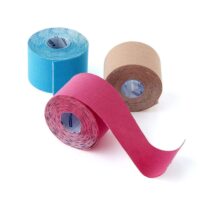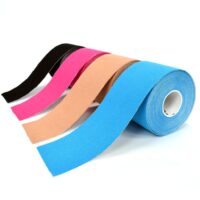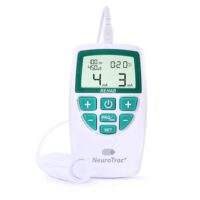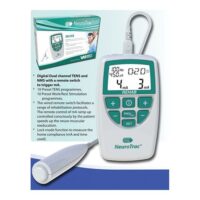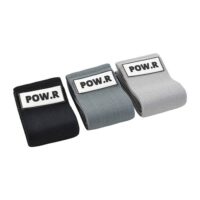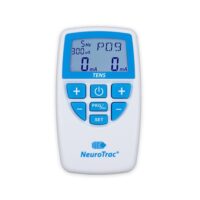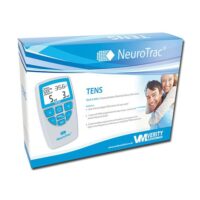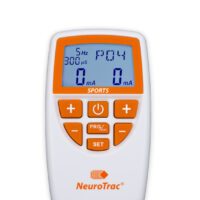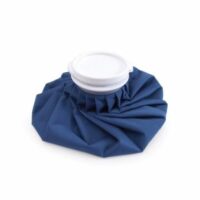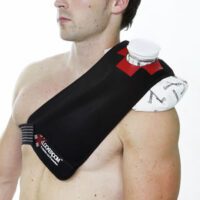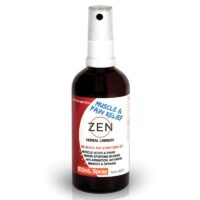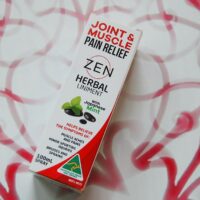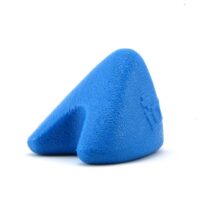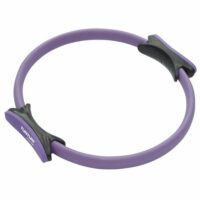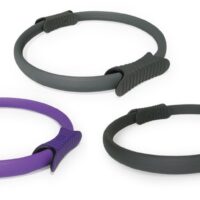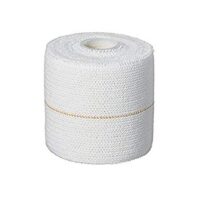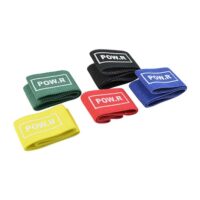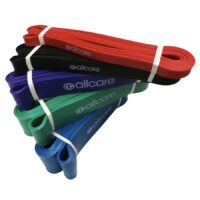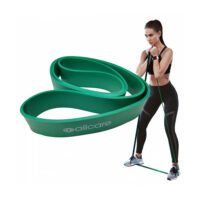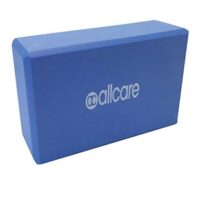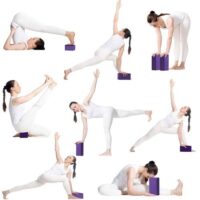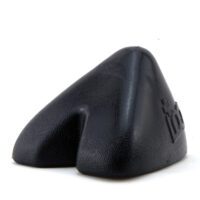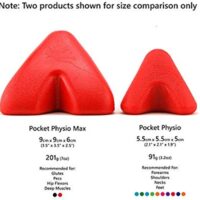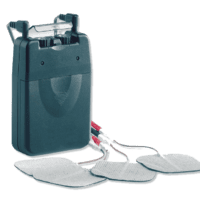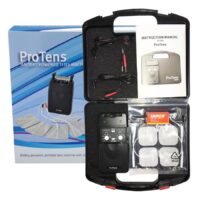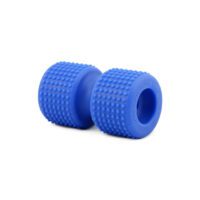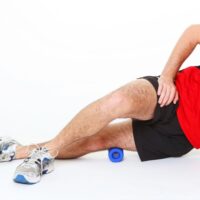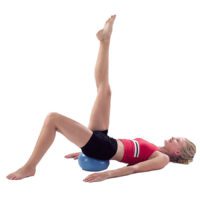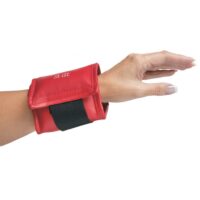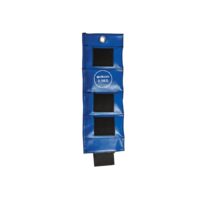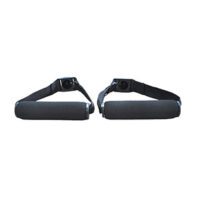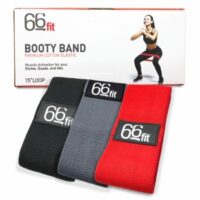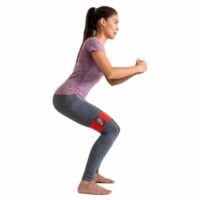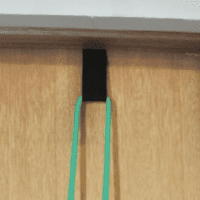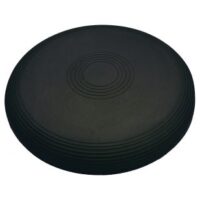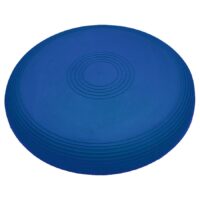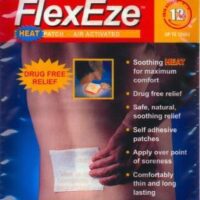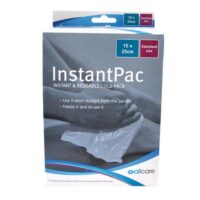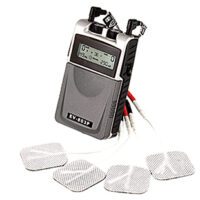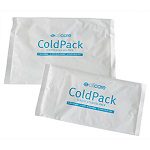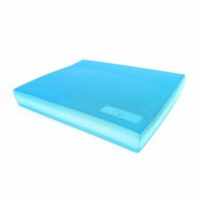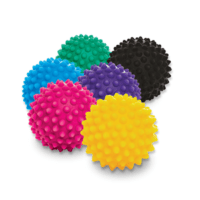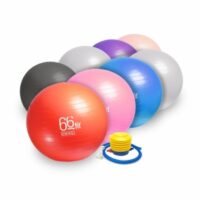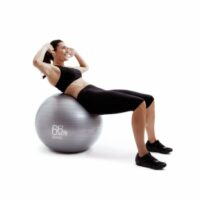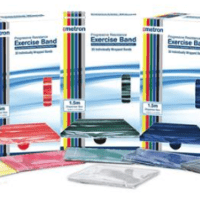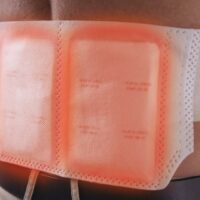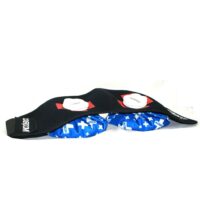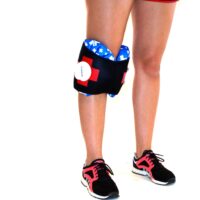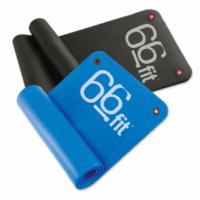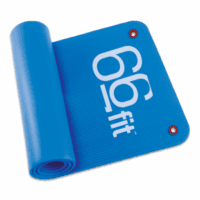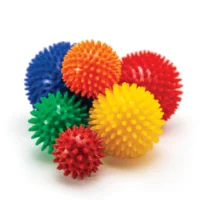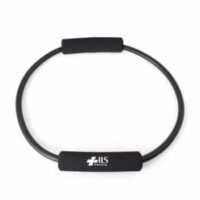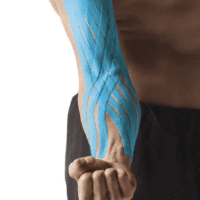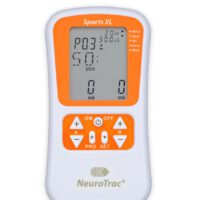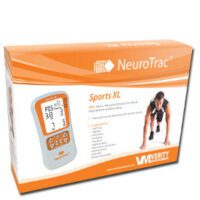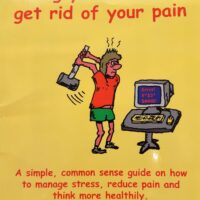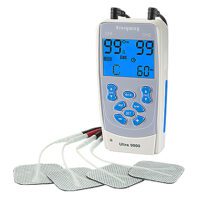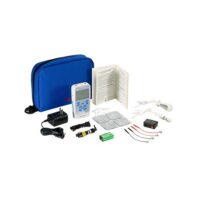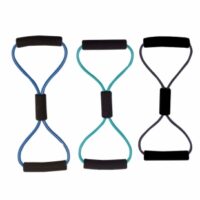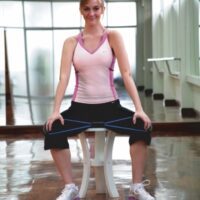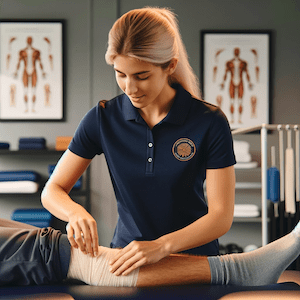Muscle Pain & Injury
Article by John Miller

Muscle Pain
Muscle Pain: How to Differentiate it from an Injury
Various causes can induce muscle pain. The important thing is to identify when muscle pain is self-managed and when to seek professional guidance.

Muscle Tears
Whether referred to as a “pulled muscle,” “muscle strain,” “muscle injury,” or “muscle tear,” these descriptions all indicate a muscle injury resulting in pain, weakness, and reduced performance. More info: Muscle Strain
Muscle Haematoma, DOMS & Cramps
Common sports-related causes of muscle pain include muscle contusions like a corked thigh, overtraining conditions like delayed onset muscle soreness (DOMS), or muscle cramps.
Rhabdomyolysis
Rhabdomyolysis is a severe condition where muscle fibres die, releasing their contents into the bloodstream. This serious condition can lead to kidney failure, requiring urgent medical attention.
Systemic Conditions
Not all muscle pain is injury-related; systemic conditions like fibromyalgia or rheumatoid arthritis can also cause it.
For a comprehensive assessment and diagnosis of your muscle pain, consult your trusted healthcare practitioner, given the various potential muscle injuries.
What Does a Muscle Injury Feel Like?
Symptoms of a muscle strain include sudden pain that worsens during muscle contraction, swelling and bruising, muscle weakness, and reduced range of motion.
- Muscle tightness
- Bruising
- Muscle weakness
- Inability to stretch your injured muscle
- Loss of function
- Muscle pain
How Do You Treat A Muscle Injury?
Muscle pain can result from any strain, injury, or tear, commonly affecting high-speed and load muscles like hamstrings, quadriceps, calf, back, and biceps.
More info:
How are Muscle Injuries Graded?
Muscle tears are graded from mild strain (Grade 1) to moderate strain (Grade 2) and complete rupture (Grade 3). Treatment options depend on the severity of the strain, tear, or rupture.
Grade I
Grade I muscle strains respond well to conservative treatment, including protection and active rest, with a gradual introduction to flexibility, strength, and power exercises based on the muscle’s functional needs. Massage therapy and dry needling are other available treatment options.
Grade II
Grade II muscle tears may require assistance from a sports physiotherapist or other healthcare practitioner specialising in muscle injuries. We recommend professionally guided rehabilitation to address scarring, inflexibility, reduced strength and performance, reducing re-injury risk.
Grade III
Grade III muscle rupture often necessitates surgery, followed by a gradual and progressive rehabilitation program under the guidance of the surgeon and physiotherapist. Seeking a professional assessment is crucial to determine the appropriate treatment.
What Helps Heal Muscle Injuries Faster After Injury?
Until receiving an accurate diagnosis, follow these guidelines:
- Seek advice from your physiotherapist, massage therapist, or trusted healthcare practitioner.
- Use ice and a compression bandage.
- Elevate the region if swollen.
- If walking is painful, use crutches.
- Reduce training until pain-free, which may include stopping all exercise.
When Can You Start Training again after a Muscle Strain Injury?
Returning to sports can be straightforward or complicated, depending on the affected muscle. Some muscle tears, such as hamstrings, can be challenging to manage. Ideally, follow these steps:
- Assess your muscle function, core stability, and biomechanics to prevent injury recurrence.
- Undergo remedial or sports-style massage to avoid the clumping of scar tissue.
- Follow a muscle rehabilitation program tailored to your chosen sport, including strength, endurance, flexibility, and speed training.
- Conduct a neural tissue dynamics assessment to ensure no nerve tissue entrapment in the scar tissue.
- Apply a heat retainer to the area upon returning to sport.
- Use ice therapy after training sessions.
Conclusion
In conclusion, recognising and understanding the difference between muscle pain and injury is essential for proper care and recovery. From muscle tears to systemic conditions, the causes of muscle pain can vary widely, and self-diagnosis may not always be accurate. Therefore, if you are experiencing persistent or severe muscle pain, seeking professional assessment and guidance from a physiotherapist or other qualified healthcare practitioner is crucial.
Your physiotherapist can thoroughly evaluate your condition, identify the specific muscle injury, and create a personalised treatment plan to facilitate a faster and safer recovery. They will guide you through appropriate exercises, rehabilitation programs, and preventive measures tailored to your needs and goals. Remember, early intervention and proper care can significantly affect your healing process and overall well-being.
So, don’t hesitate to take the first step towards recovery. Contact a trusted physiotherapist to address your muscle pain or injury effectively. Your active participation in seeking professional assessment will play a vital role in regaining strength, mobility and achieving a healthy, pain-free life. Take action today for a healthier tomorrow!
Related Articles
- Understanding Muscle Pain vs. Other Conditions: Offers insights into differentiating muscle pain from systemic conditions like fibromyalgia and rheumatoid arthritis, as well as prevention and management strategies.
- Hip Adductor Tendinopathy Solutions: Discusses groin pain, including adductor-related pain and systemic diseases affecting the hip, which could be beneficial for readers experiencing related muscle discomfort.
- Greater Trochanteric Pain Syndrome (GTPS) Overview: Provides information on conditions related to hip and groin pain, including piriformis syndrome and muscle strain, and discusses systemic diseases affecting the hip.
- Effective Shin Pain Treatment and Management: Focuses on shin pain causes, including overuse injuries and systemic conditions, and offers treatment advice for shin splints and stress fractures.
- Thigh Pain Insights: Explores muscle pain and injuries affecting the thigh, making it relevant for readers looking to understand more about muscle-related discomfort in this area.
- Calf Strain and Tear Treatment: Offers a detailed guide on managing calf discomfort, including causes, treatment for strains and tears, and information on compartment syndrome and cramps.
Common Muscle Injuries
A Physiotherapist's Guide
Introduction
Muscle injuries, presenting as muscle strain, pain or myalgia, are prevalent health issues affecting a wide range of individuals. This detailed guide, from a physiotherapist's perspective, delves into various muscle injuries, elaborating on their management, prevention, and the importance of professional advice. Explore the linked articles for an in-depth understanding of muscle injuries and their effective treatment.
Neck & Back Muscle Injuries: Causes and Solutions
- Back Muscle Pain: This pain often results from prolonged poor posture or physical overuse. Key to relief is engaging in exercises that strengthen the core muscles and improve posture, thereby alleviating the strain on the back.
- Neck Sprain: Caused by sudden, awkward movements, a neck sprain can benefit from a combination of gentle stretches and targeted strengthening exercises to restore flexibility and strength.
- Text Neck: A modern ailment resulting from extended mobile device use, text neck can lead to chronic pain. Regular breaks, posture-awareness, and neck-strengthening exercises are essential for prevention.
- Whiplash: Commonly occurring in car accidents, whiplash requires a careful approach including neck stabilisation exercises and controlled movement to encourage healing and prevent further injury.
Lower Limb Muscle Injuries: Understanding and Treating
- Hamstring Strain: Particularly common among athletes, particularly runners, this strain demands rest initially, followed by a carefully structured rehabilitation program focusing on gradual strength building and flexibility.
- Thigh Strain: Often seen in sports involving sprinting and jumping, thigh strains need a combination of rest, ice, compression, and elevation (RICE) in the initial stages, followed by carefully planned strengthening exercises.
- Groin Strain: This injury requires a nuanced approach, including sufficient rest and targeted exercises, to ensure a safe and effective recovery.
- Calf Muscle Tear: Key to recovery is a balance of rest, gentle stretching exercises, and a gradual return to full activity, ensuring the muscle heals correctly and strength is regained.
Upper Limb Muscle Injuries: Prevention and Care
- Golfer's Elbow and Tennis Elbow: Both these conditions involve inflammation of the tendons and require a rest period, followed by ice therapy and specific exercises tailored to strengthen the affected muscles.
- Corked Thigh: Resulting from direct impacts, these injuries demand immediate application of ice and a controlled, gradual exercise regime for recovery.
- DOMS, Fatigue-Related Cramps & Myalgia: Adequate rest, good hydration, and gentle stretching are crucial in alleviating these conditions.
- RSI: Regular stretching, ergonomic workplace adjustments, and taking breaks are key preventive measures for repetitive strain injury.
Systemic Causes of Muscle Pain: A Holistic View
- Fibromyalgia: This complex condition demands a holistic treatment approach, including exercise routines, stress management techniques, and sometimes medication.
- Rheumatoid Arthritis: Effective management combines medication, gentle exercise, and regular physiotherapy sessions.
Prevention and Management Strategies
- Regular Exercise: Regular physical activity helps maintain muscle strength and flexibility, reducing the risk of muscle injuries.
- Posture Improvement: Good posture, both in motion and at rest, is crucial for preventing muscle strain.
- Proper Warm-up and Cool-down: Adequate warm-up before and cool-down after physical activity is vital in preventing muscle strains and injuries.
- Ergonomic Adjustments: Making ergonomic adjustments at work and during daily activities can significantly reduce the risk of repetitive strain injuries and other muscle-related issues.
- Maintaining a Healthy Weight: Keeping a healthy weight reduces the strain on muscles, particularly in weight-bearing joints.
What to Do? Seeking Professional Advice
Consult a physiotherapist or doctor for personalised advice and treatment plans. Remember, early intervention can significantly improve recovery outcomes and prevent chronic problems.
Conclusion
While muscle injuries are common, effective management and prevention are achievable with the right approach and knowledge. Understanding the causes, symptoms, and various treatments available empowers individuals to take proactive steps in their recovery and prevention. For the most tailored and effective treatment, always seek the guidance of a professional physiotherapist.
Common Muscle Injury FAQs
Managing and Recovering from Muscle Injuries
Welcome to our Muscle Injury FAQs. It's your comprehensive guide for understanding, treating, and bouncing back from muscle injuries.
We'll discuss the different muscle injury types, grasp the concept of muscle trigger points, and discover the reasons behind muscular pain post-exercise. Learn about effective treatments to speed up recovery, and explore the benefits of stretching exercises and foam rollers. Embrace the therapeutic effects of various massage therapies including remedial, relaxation, trigger point, acupressure, and sports massages. Gear up to play an active part in your journey towards recovery from muscle injuries.
For more detailed information simple the question hyperlinks below.
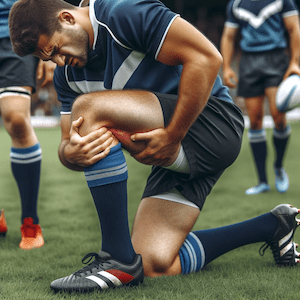

Diagnosing Muscle Injuries
- How Do You Know If It’s A Muscle Injury? - Understand how to identify a muscle injury, distinguishing it from other types of pain.
- What are the 4 Types of Muscle Injuries? - Explore the four main categories of muscle injuries, including strains and tears.
- What are the Most Common Muscle Injuries? - Learn about the most frequently occurring muscle injuries and how they affect your body.
- What is a Trigger Point in a Muscle? - Discover what trigger points are and their role in muscle pain.
- What Causes Post-Exercise Muscular Pain? - Uncover the reasons behind the muscular discomfort you feel after exercising.
- How Do You Know If Your Back Pain Is Muscular? - Find out how to determine if your back pain is due to a muscle injury.
- Tendinopathy vs Muscle Tear: What's the Difference? - Understand the differences between tendinopathy and muscle tears.
- Muscle vs Ligament Injury? - Learn the distinctions between injuries to muscles and ligaments.
Early Muscle Injury Treatment
Muscle Treatment & Recovery
- What is the Best Early Muscle Injury Treatment? - Discover the most effective initial treatments for muscle injuries.
- How Long Does it Take for a Muscle Injury to Heal? - Find out the typical healing times for various muscle injuries.
- How Does Dry Needling Help Muscle Injury? - Explore the benefits and process of dry needling in muscle injury recovery.
- How Can You Speed Up Muscle Recovery? - Learn strategies to accelerate the healing process of muscle injuries.
- What’s the Benefit of Stretching Exercises? - Understand the importance of stretching exercises in muscle recovery.
- How Do Foam Rollers Help Muscle Recovery? - Discover how foam rollers aid in the recovery of muscle injuries.


Massage & Muscle Injuries
- Muscle Injury? What are the Benefits of Getting a Massage? - Explore the therapeutic advantages of massage for muscle injuries.
- What Is The Difference Between Remedial & Relaxation Massage? - Learn the distinctions between remedial and relaxation massage techniques.
- How Does Trigger Point Therapy Help? - Understand the role of trigger point therapy in treating muscle injuries.
- How Does Acupressure Help Muscle Injury? - Discover how acupressure can aid in the recovery of muscle injuries.
- What is Sports Massage? - Explore the specifics and benefits of sports massage for athletes and active individuals.
- When is the Best Time to Get a Pre-Event Massage? - Learn the optimal timing for a pre-event massage to enhance performance.
- When is the Best Time for Your Post-Event Massage? - Find out the ideal time to receive a post-event massage for effective recovery.
Conclusion
In conclusion, this FAQ article on managing and recovering from muscle injuries offers a wealth of information, from understanding different types of injuries like muscle strains and tears, to exploring various treatment and recovery options. Whether you're dealing with a recent injury, seeking preventive advice, or exploring therapeutic methods like massage and acupressure, this guide serves as a valuable resource.
Remember, the journey to recovery is unique for each individual, and this guide aims to empower you with knowledge and tools to aid in your healing process. Stay informed, listen to your body, and seek professional advice when needed, as you navigate the path to recovery and optimal muscle health.




